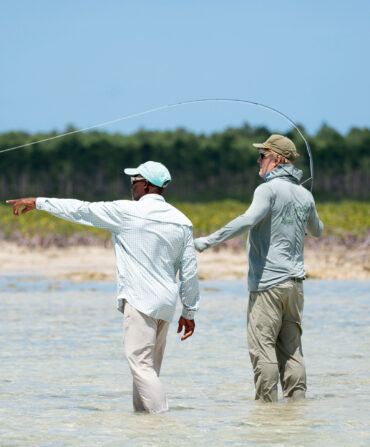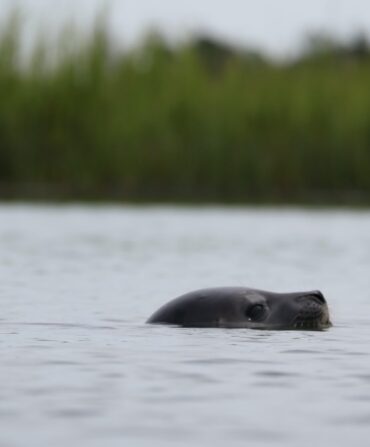Mr. Bob can’t catch a break.
Southern quail have to contend with hungry raccoons, Cooper’s hawks, and a host of white-meat-loving snakes, plus chick-drowning spring floods and unwelcome non-native invaders in the form of fire ants and coyotes. It seems like the list never ends, which helps explain why 70 percent or more of quail chicks don’t make it to their first birthday.
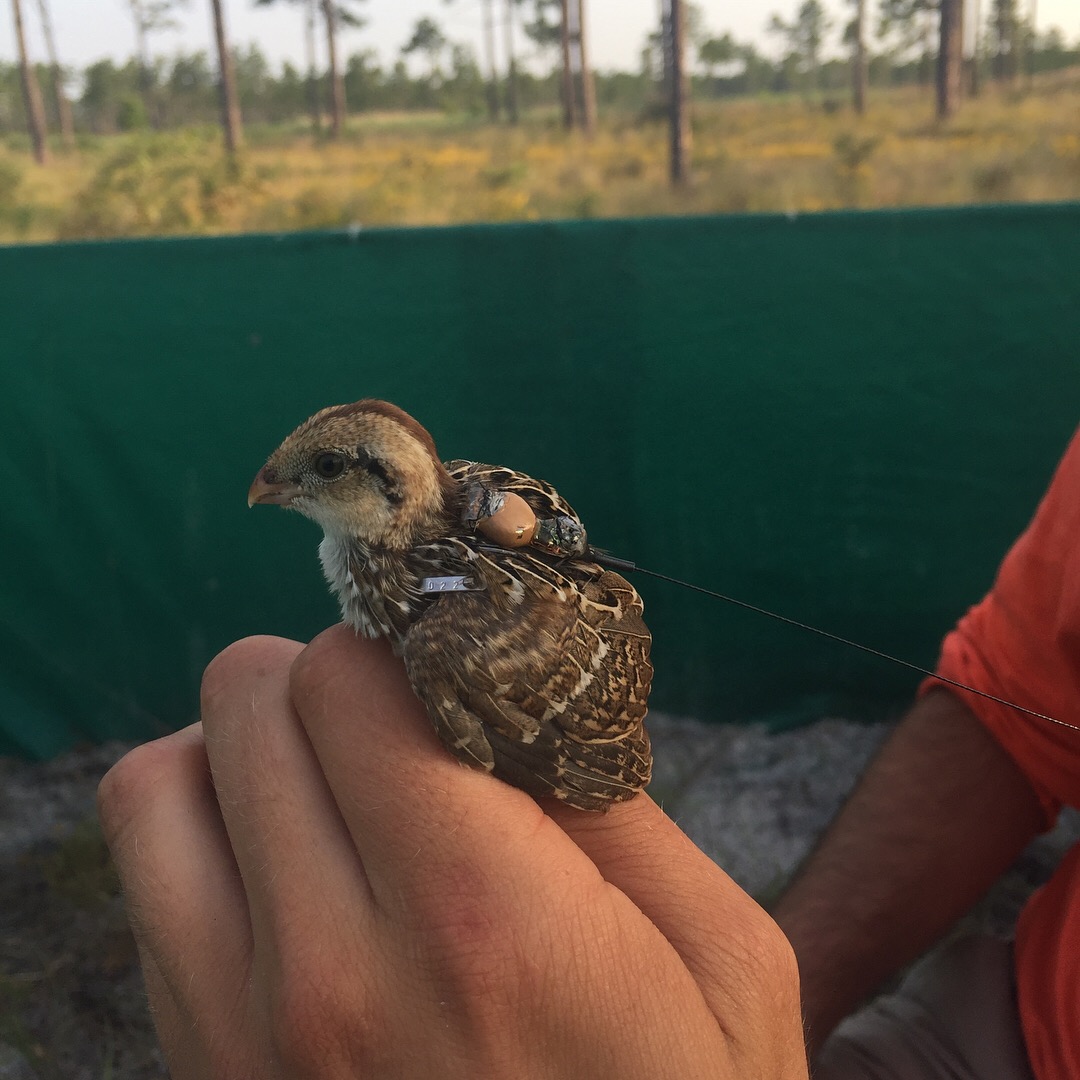
Photo: Courtesy of Justin Hill and the University of Georgia
A bobwhite quail chick fitted with a tag and radio transmitter, which allows researchers to track the birds’ movements and survival rates.
And now, it appears, we can add another predator to the mix. Justin Hill, a University of Georgia graduate student working with the Tallahassee, Florida-based quail research facility Tall Timbers, recently tracked the telltale chirp of a radio telemetry tag to an unusual end. Hill studies quail chick ecology, including tagging and tracking chicks to better understand how they use cover for brooding, roosting, and feeding. When his telemetry equipment pinged with a muffled, hollow sound, he figured his target had been swallowed by a corn or yellow rat snake, a not uncommon occurrence. Instead, he followed his headphones to a wet, tangled seep, on the edge of which squatted an American bullfrog. A quite satisfied bullfrog, as it turned out. The amphibian had swallowed not only the radio-tagged quail chick, but also another chick with a wing-tag from Hill’s research.
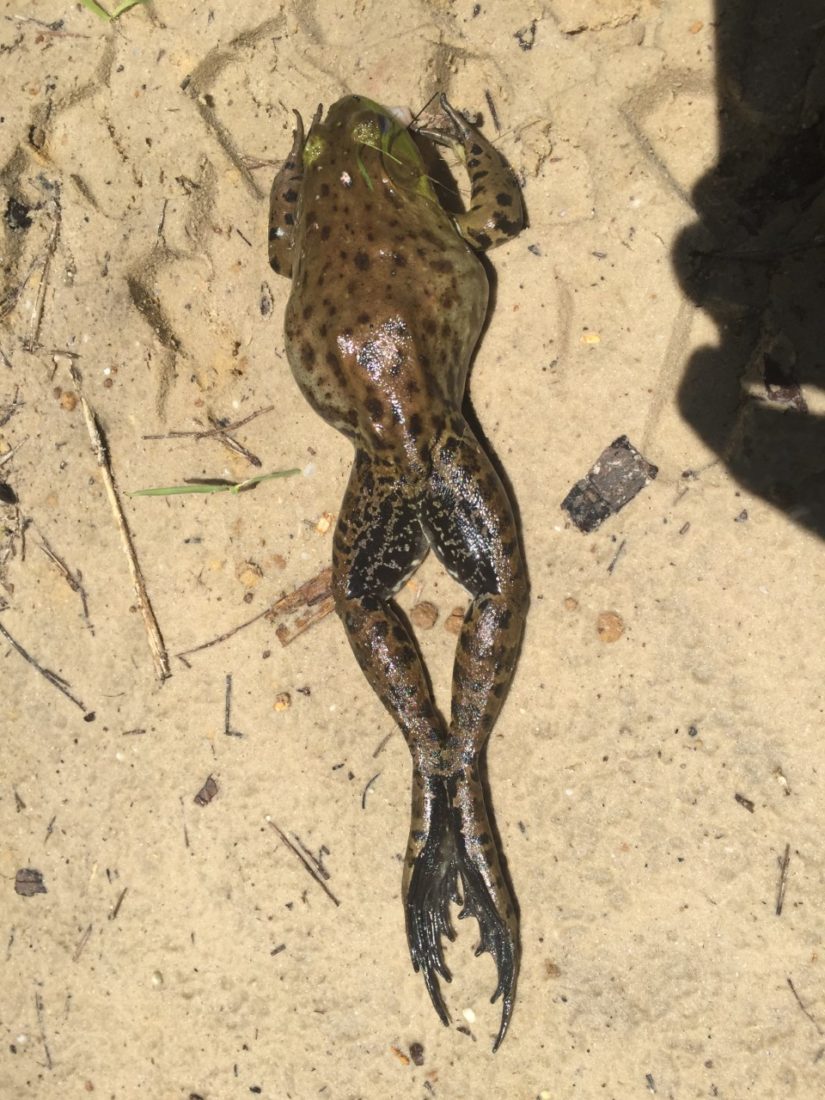
Photo: Courtesy of Justin Hill and the University of Georgia
An American bullfrog with two quail chicks in its belly.
According to subsequent work by Hill, it was the first scientifically documented quail-chick lunch special by a bullfrog. “It was pretty crazy,” he says with a laugh. The unusual find is being written up for the next issue of Herpetological Review.
“We work hard to study what these birds need to thrive, and what we need to do to keep the right kind of habitat on the ground,” Hill says. “But a hungry bullfrog—well, there’s just not much we can do about that.”
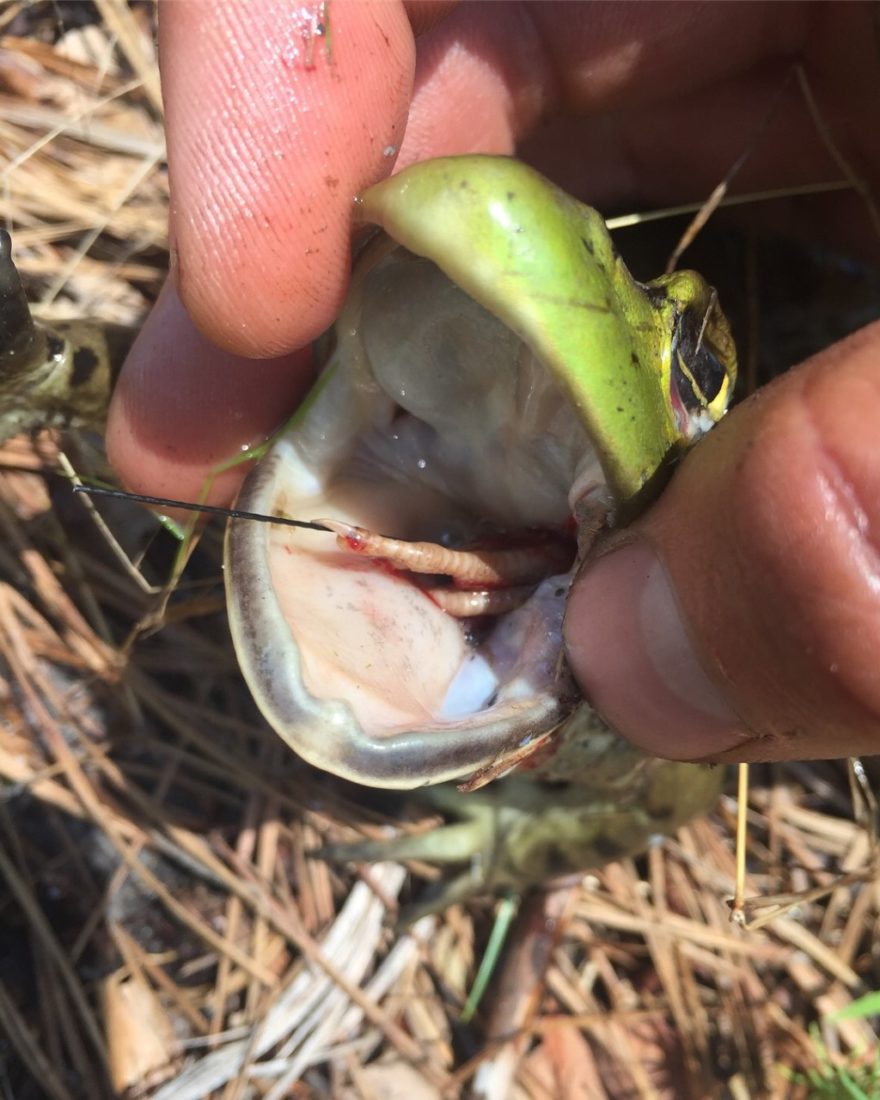
Photo: Courtesy of Justin Hill and the University of Georgia
A chick’s foot and radio antenna, visible inside the bullfrog’s mouth.
Hunting seasons for northern bobwhite open soon all across the South, so it won’t be long before these native birds will be looking over their feathered shoulders at pointers, setters, and spaniels—at least the ones that have made it through the sometimes surprising rigors of spring and summer. Knowing what tough customers these birds are to have survived until the fall should only deepen a hunter’s appreciation for a covey rise, and the work being done by researchers such as Hill and Tall Timbers to keep wild quail a part of the Southern landscape.



